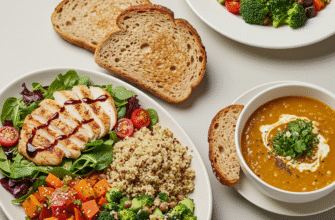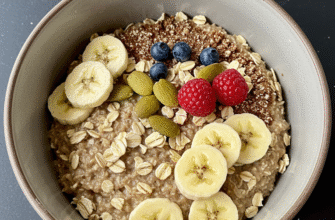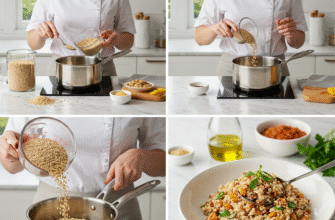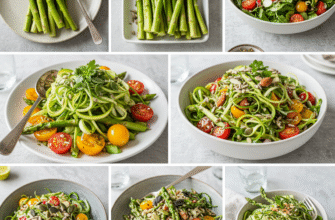Forget the misconception that vibrant, flavorful food can’t also be incredibly good for you. Spanish cuisine, often associated with rich tapas and hearty paellas, holds a treasure trove of healthy eating secrets rooted in the Mediterranean way of life. It’s a culinary landscape brimming with fresh produce, lean proteins, and heart-healthy fats, all brought together with bold, exciting flavors. Exploring these Spanish tastes is not just about trying new recipes; it’s about embracing a philosophy where deliciousness and well-being dance together on the plate.
At the heart of healthy Spanish cooking lies an emphasis on high-quality, fresh ingredients. Think sun-ripened tomatoes bursting with juice, crisp peppers in a rainbow of colors, tender artichokes, leafy greens, and an abundance of legumes like chickpeas and lentils. Seafood, plucked fresh from the surrounding waters, plays a starring role, alongside lean meats like chicken and rabbit. It’s this reliance on whole, unprocessed foods that forms the foundation of its health benefits.
The Pillars of Spanish Flavor
To bring Spanish sunshine into your healthy kitchen, understanding the core flavor components is key. These aren’t exotic, hard-to-find items; many are likely already pantry staples.
No exploration of Spanish cuisine is complete without paying homage to olive oil, specifically extra virgin olive oil (EVOO). Used generously but wisely, it’s the primary source of fat. Unlike heavier fats, EVOO is packed with monounsaturated fats and antioxidants. In healthy Spanish cooking, it’s used for light sautéing, dressing salads, drizzling over finished dishes for flavor, and even in marinades. The key is quality – a good Spanish EVOO offers fruity, sometimes peppery notes that enhance rather than overwhelm.
The Aromatic Duo: Garlic and Onion
Nearly every savory Spanish dish begins with the sizzle of garlic (ajo) and onions (cebolla) in olive oil. This simple combination, often forming the base of a ‘sofrito’, builds an incredible depth of flavor without adding unhealthy ingredients. Garlic, known for its health-promoting properties, is used liberally, whether minced, sliced, or roasted whole until sweet and tender.
The Soul Spice: Pimentón (Spanish Paprika)
Pimentón is arguably Spain’s signature spice. It’s made from ground peppers, but what sets it apart is the drying process – often involving smoking over oak wood fires. This imparts a unique, complex flavor that’s essential to dishes like chorizo (though we’re focusing on healthier applications!), patatas bravas sauce, and countless stews and rubs. It comes in several varieties:
- Dulce: Sweet and mild.
- Agridulce: Bittersweet, with medium heat.
- Picante: Hot and spicy.
- Ahumado: Smoked (can be dulce, agridulce, or picante).
Using smoked paprika can add a meaty depth to vegetarian dishes, reducing the need for heavier ingredients.
Precious Threads: Saffron (Azafrán)
Known as the world’s most expensive spice, saffron lends its distinctive yellow color and unique, slightly floral, earthy flavor to iconic dishes like paella. While potent, a tiny pinch goes a long way. It infuses rice, seafood broths, and stews with an unmistakable Spanish character.
Fresh Herbs and Zesty Acids
Fresh parsley is ubiquitous, adding brightness to finished dishes. Thyme and rosemary contribute earthy notes, particularly good with roasted vegetables or chicken. Sherry vinegar (Vinagre de Jerez), with its complex, nutty flavor, is the go-to for vinaigrettes and adding acidity to balance rich flavors. Lemons and oranges also feature prominently, their zest and juice used to cut through richness and add freshness, especially to seafood and salads.
Healthy Spanish Cooking Techniques
It’s not just *what* you cook, but *how* you cook it. Spanish culinary traditions offer several methods perfect for healthy eating.
A la Plancha: Grilling Power
‘A la plancha’ simply means ‘grilled on a metal plate’. This high-heat cooking method requires minimal oil, allowing the natural flavors of seafood, vegetables (like asparagus, spring onions, or zucchini), and lean meats to shine. It provides a beautiful sear and slight smokiness without added fats.
Roasting and Baking
Roasting vegetables like bell peppers, eggplant, and onions brings out their natural sweetness. Potatoes are often roasted rather than fried. Baking is a fantastic alternative for dishes traditionally fried, like a lighter Tortilla Española (Spanish omelet).
Sofrito Savvy
The aforementioned sofrito – typically garlic, onion, and often tomato or peppers gently sautéed in olive oil – is a masterclass in building flavor slowly and healthily. It forms the delicious base for stews, rice dishes, and sauces, extracting maximum taste from simple ingredients.
Verified Information: The foundation of many healthy Spanish dishes aligns closely with the Mediterranean diet pattern. This eating style, rich in olive oil, fruits, vegetables, legumes, nuts, and fish, has been extensively studied and linked to numerous health benefits, including improved heart health and longevity. Focusing on these core components is key.
Light Stews and Soups
While some Spanish stews can be heavy, many traditional ‘potajes’ (legume stews) are incredibly wholesome, relying on beans or lentils, vegetables, and perhaps a small amount of flavorful cured meat (which can be omitted or used sparingly for flavor). Cold soups like Gazpacho and Salmorejo are nutrient powerhouses, essentially drinkable salads.
Giving Classics a Healthy Makeover
Many beloved Spanish dishes can be easily adapted for a healthier profile without sacrificing their essence.
Reimagining Paella
The quintessential Spanish rice dish doesn’t have to be an indulgence. Boost the health factor by:
- Using brown rice for extra fiber (adjust cooking time and liquid).
- Loading up on vegetables: peas, green beans, artichoke hearts, bell peppers.
- Choosing lean proteins: chicken breast, rabbit, monkfish, shrimp, mussels, or even chickpeas for a vegetarian version.
- Using pimentón and saffron for authentic flavor, reducing reliance on fatty chorizo (or using a tiny amount solely for flavor).
- Controlling the amount of olive oil used for the initial sofrito.
Lighter Tortilla Española
The traditional Spanish potato and onion omelet is often deep-fried. Lighten it up considerably:
- Slice potatoes thinly and onions. Gently cook them in a non-stick pan with a tablespoon or two of olive oil until tender, covering the pan to help steam them.
- Alternatively, par-boil or steam the potato slices first.
- Bake the tortilla in an oven-safe dish instead of frying it on the stovetop.
- Add vegetables like spinach, zucchini, or roasted peppers to the egg mixture for extra nutrients and flavor.
Tapas Tactics for Health
Navigate the tapas menu (or create your own healthy spread) wisely:
- Embrace: Gambas al Ajillo (shrimp in garlic, made with less oil), Pimientos de Padrón (blistered peppers, pan-fried lightly or air-fried), grilled vegetables, Ensalada Mixta (mixed salad with simple vinaigrette), olives, Boquerones en Vinagre (marinated anchovies), Pulpo a la Gallega (octopus with paprika, go easy on oil).
- Moderate/Adapt: Patatas Bravas (bake the potatoes, make a lighter tomato-based sauce), Croquetas (try baked versions with vegetable fillings).
- Limit: Deep-fried items, anything swimming in heavy sauces or excessive oil.
Gazpacho and Salmorejo Glory
These chilled tomato-based soups are naturally healthy. Made primarily from blended raw vegetables (tomatoes, peppers, cucumbers, onions, garlic) and a touch of olive oil and vinegar, they are refreshing and packed with vitamins. Go easy on traditional bread thickeners or garnishes for the lightest versions.
Bringing It All Together
Incorporating Spanish flavors into your healthy routine can be simple. Start with a flavorful salad dressed in sherry vinaigrette. Grill some fish or chicken marinated with garlic, lemon, and smoked paprika, served alongside roasted asparagus or a simple bean salad. Try making a large batch of Gazpacho for quick, healthy lunches. Experiment with pimentón in rubs or stews. The possibilities are as vibrant and varied as Spain itself.
Exploring Spanish cuisine through a healthy lens reveals a world of intense flavors, satisfying textures, and meals that nourish both body and soul. It’s about celebrating fresh ingredients, utilizing smart cooking techniques, and understanding the power of simple, bold seasonings. So, grab some good olive oil, a tin of pimentón, and let the delicious, healthy journey begin!









